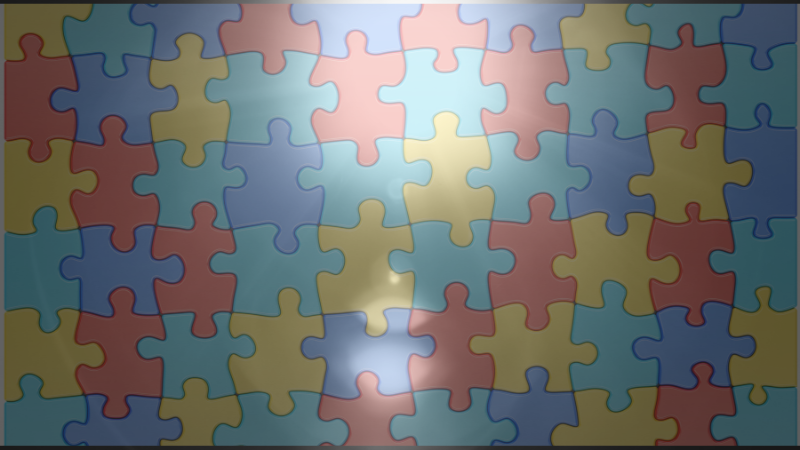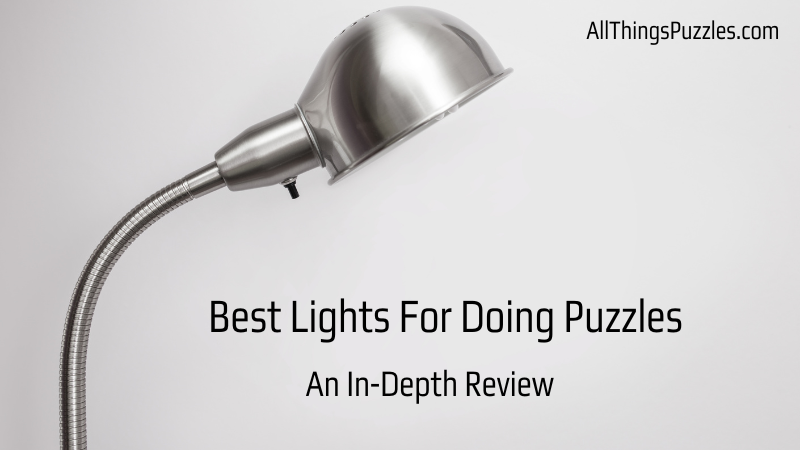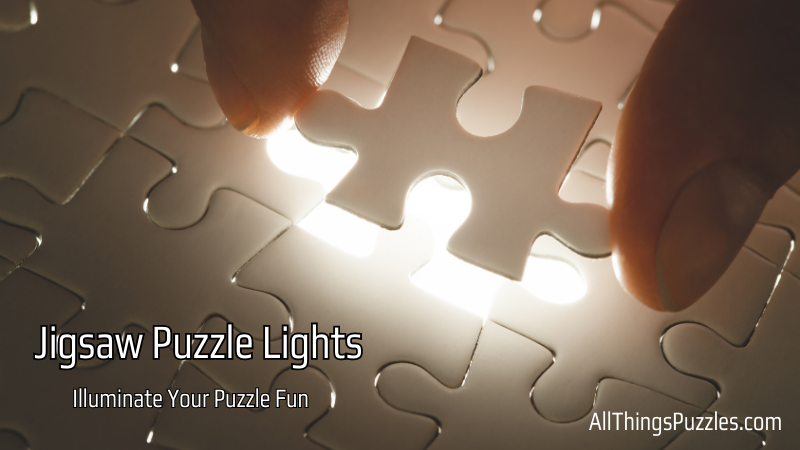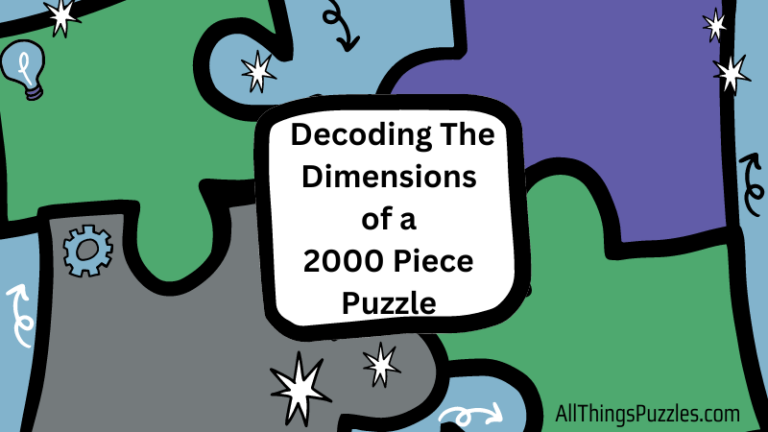Hello, fellow puzzle enthusiasts! Today, we’re tackling a question that’s been puzzling many of us: “How do you light a puzzle without glare?” Glare can be a real spoiler when you’re deep into solving a puzzle. But don’t worry, I’ve got some illuminating tips for you!
Understanding Glare
First, let’s shed some light on what glare is. Glare is that annoying bright light that reflects off surfaces and interferes with your vision. When you’re piecing together a puzzle, glare can make it hard to distinguish colors and details, turning a fun activity into a frustrating one.
The Science Behind Glare
Without getting too technical, glare happens when a bright light source hits a reflective surface – like your glossy puzzle pieces – and scatters, causing visual discomfort. The angle of the light source and the surface’s reflectivity can increase or decrease the amount of glare.
The Importance of Proper Lighting in Puzzle Solving
Proper lighting is crucial when you’re solving puzzles. It helps you distinguish between similar colors and see tiny details. But when that light source causes glare, it can strain your eyes and make puzzle-solving a less enjoyable experience.
The Impact of Poor Lighting
Poor lighting can lead to eye strain, headaches, and even long-term vision problems. It can also make it harder to distinguish between similar colors or see small details, slowing down your puzzle-solving progress.
How to Light a Puzzle Without Glare

Now, let’s get to the heart of the matter: how do you light a puzzle without glare? Here are some strategies you can try.
Choosing the Right Light Source
The type of light you use can make a big difference. Natural light is the best option, but it’s not always available. When using artificial light, opt for LED lights. They’re energy-efficient and provide a steady, even light that’s less likely to cause glare.
Natural Light

Natural light is soft, diffused, and less likely to cause glare. If possible, set up your puzzle area near a window. But avoid direct sunlight, which can be too harsh and cause glare.
Artificial Light
When natural light isn’t an option, LED lights are your best bet. They provide a steady, even light that’s perfect for puzzle-solving. Position the light source to the side or behind you to minimize glare.
Positioning Your Light Source
The position of your light source can also affect glare. Ideally, the light should come from behind you or from the side. This way, the light shines on the puzzle without reflecting back into your eyes.
Using Light Diffusers
Light diffusers spread the light out evenly, reducing glare. You can find light diffusers for table lamps, ceiling lights, and even for windows to diffuse natural light.
Using Light Diffusers
Light diffusers are a fantastic tool to combat glare when working on puzzles. They work by scattering light, spreading it out evenly across a larger area. This reduces the intensity of the light when it hits your puzzle, thereby minimizing glare.
There are several types of light diffusers you can use, depending on your light source:
Lampshade Diffusers
If you’re using a table lamp or a floor lamp, a lampshade can act as a diffuser. Lampshades made from semi-opaque materials can help spread the light from the bulb evenly, reducing hotspots of intense light that can cause glare.
Ceiling Light Diffusers
For ceiling lights, diffuser panels or covers can be used. These are often made from frosted or textured glass or plastic, which helps to spread the light evenly across the room.
Window Diffusers
If you’re using natural light, window diffusers can be a great option. These can be in the form of blinds, curtains, or window films. They help to soften the sunlight coming through the window, reducing the intensity and minimizing glare.
When choosing a light diffuser, consider the size of your puzzle area and the intensity of your light source. A larger puzzle area or a more intense light source may require a larger or more effective diffuser.
Remember, the goal is to create a comfortable, well-lit environment that allows you to enjoy your puzzle-solving experience without the annoyance of glare. Experiment with different types of diffusers to find what works best for you. Happy puzzling!
Additional Tips to Enhance Your Puzzle-Solving Experience
Apart from lighting, a good puzzle mat can also enhance your puzzle-solving experience. It provides a soft, non-reflective surface that can further reduce glare. Check out our guide on choosing the Top Rated Jigsaw Puzzle Boards for more tips.
FAQs
We’ve covered a lot about lighting puzzles without glare, but you might still have a few questions. Here are some frequently asked questions that might help clarify things further.
Why is natural light better for puzzle-solving?
Natural light is generally softer and more diffused than artificial light, which makes it less likely to cause glare. It also provides a more accurate color representation, which can be helpful when you’re trying to distinguish between similar colors in a puzzle.
What type of artificial light is best for puzzle-solving?
LED lights are the best option for puzzle-solving. They provide a steady, even light that’s less likely to cause glare. Plus, they’re energy-efficient, which is a bonus if you’re spending long hours on your puzzle.
Can the color of the light affect glare?
Yes, the color of the light can affect glare. Warmer light (yellowish) tends to cause less glare than cooler light (bluish). When choosing artificial lights for puzzle-solving, opt for ones that provide warm light.
Additional Reading
Conclusion
So, that’s the answer to “How do you light a puzzle without glare?” With the right light source, proper positioning, and a good light diffuser, you can enjoy your puzzle-solving without the annoyance of glare.
Remember, the key to a great puzzle-solving experience is comfort. So, experiment with different lighting options and see what works best for you. Happy puzzling!
For more puzzle-solving tips and tricks, stay tuned to All Things Puzzles. Happy puzzling!









